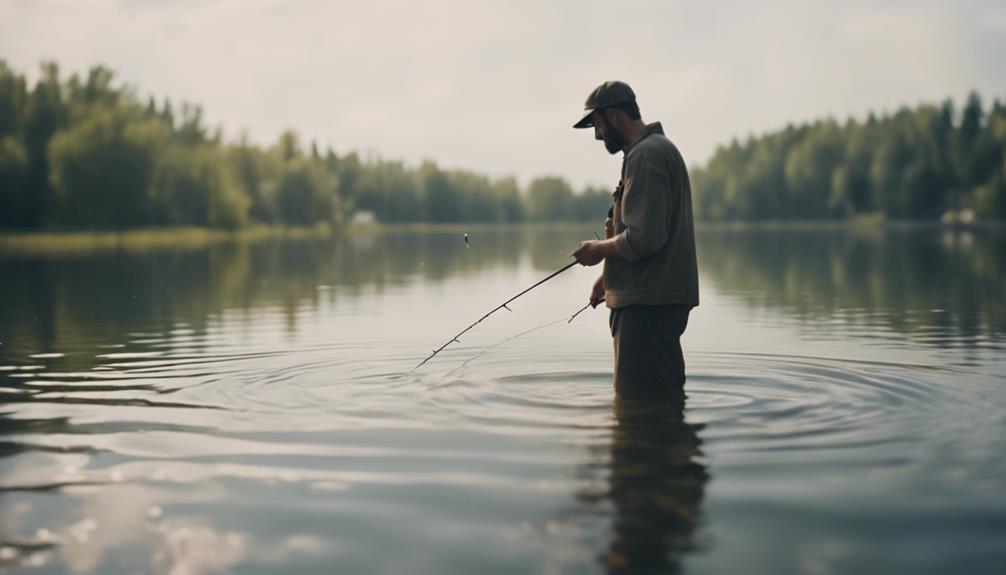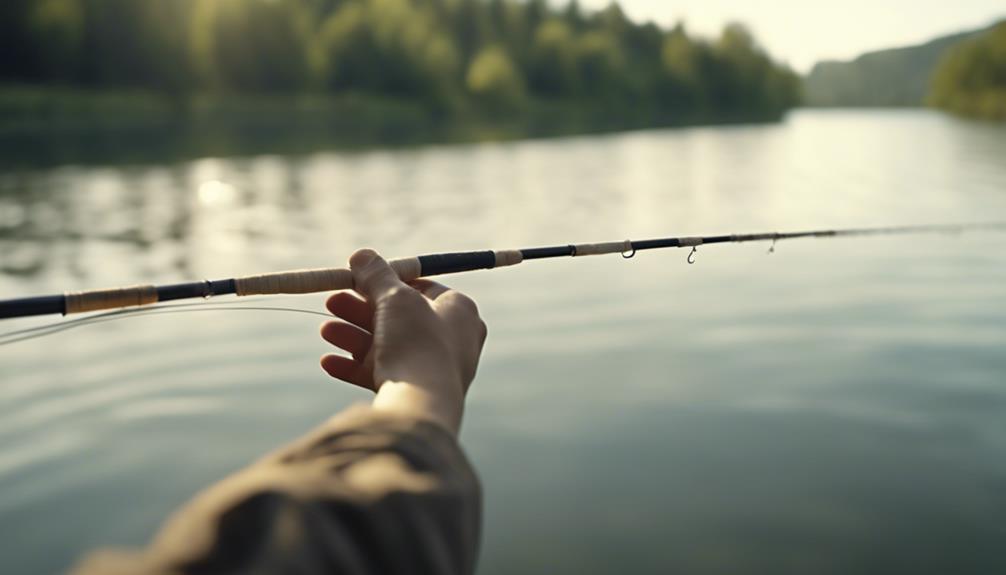Hey there, angler! Line fishing for freshwater catches is like having a trusty sidekick on your fishing adventures.
Have you ever wondered why choosing the right fishing line can make all the difference between a successful day on the water and heading home empty-handed?
Well, let's reel in the reasons why line fishing is the ultimate game-changer for landing those prized freshwater catches.
Key Takeaways
- Hand lining offers a hands-on fishing experience with direct control and enhanced sensitivity.
- Versatile gear allows for successful catches of various freshwater species like catfish, carp, trout, and panfish.
- Conservation-friendly practices such as minimizing bycatch and promoting sustainability are easily implemented.
- Mastering hand lining techniques ensures efficient hook setting and gentle handling for the fish's well-being.
Types of Fish for Hand Lining

When hand lining for freshwater catches, targeting species like catfish, carp, trout, and panfish can provide an exciting and rewarding fishing experience. In freshwater environments, these specific fish species are commonly pursued using hand lining setups.
Catfish are often attracted to stink baits or cut bait, while carp may prefer dough balls or corn. Trout are known to go for artificial lures or live bait like worms. Panfish, such as bluegill or crappie, are typically caught with small jigs or live insects.
Hand lining allows for precise bait presentation, making it easier to entice these fish in smaller bodies of water. This versatile fishing technique offers a direct connection between you and the fish, enhancing the thrill of the catch.
Benefits of Hand Lining Technique

Ready to reel in the benefits of hand lining technique?
Hand lining, a traditional fishing method, provides a tactile fishing experience like no other. You'll feel every movement and bite of the fish, allowing for precision and finesse, especially when targeting small or delicate species.
With hand lining, you can easily adjust the tension on the line, simplifying the process of playing and landing your catch. This technique requires minimal equipment, offering a back-to-basics approach to angling that many freshwater enthusiasts appreciate.
Embrace the simplicity and direct connection to the fish that hand lining provides, and enjoy the thrill of a more hands-on fishing experience.
Essential Gear for Hand Lining

Gear up for successful hand lining adventures with just a few essential items to enhance your fishing experience.
When preparing for hand lining in freshwater environments, make sure to have a sturdy spool of fishing line to reel in your catches effectively. Additionally, having sinkers of various weights will help you adjust to different water conditions and depths. Hooks are important for securing your bait and catching fish, so having a selection for various species is important.
Hand lining provides a direct connection between you and the fish, making it a unique and traditional fishing experience. Its versatility allows for use in lakes, rivers, and ponds, making it a popular choice for recreational fishing enthusiasts.
Tips for Successful Hand Lining

To improve your success in hand lining, mastering essential techniques is key. When fishing for freshwater species like catfish, carp, trout, or panfish, remember to control the line with your hands. Feel for the subtle bites and swiftly set the hook when you sense a bite.
Maintaining tension on the line is important to prevent the fish from getting away. As you reel in your catch, keep the line taut to make certain a successful landing. Practice setting the hook efficiently and bringing the fish to shore carefully.
With these tips, you'll enhance your hand lining skills and increase your chances of a rewarding catch. Enjoy the thrill of hand lining and the satisfaction of mastering this traditional fishing technique!
Conservation Practices for Hand Lining

When considering conservation practices for hand lining, prioritize minimizing bycatch, reducing impact on marine habitats, and releasing non-targeted species promptly and safely.
- Minimize Bycatch: Use techniques like circle hooks or changing bait types to reduce unintended catches.
- Protect Marine Habitats: Avoid fishing in sensitive areas like coral reefs or seagrass beds to safeguard ecosystems.
- Practice Selective Fishing: Target specific species and sizes to minimize impact on overall fish populations.
- Promote Sustainable Fishing: Adhere to catch limits, use barbless hooks, and handle fish with care to secure their survival.
Conclusion
So, next time you head out to fish for freshwater catches, consider line fishing as your technique of choice.
With the right line and technique, you can improve your chances of landing more fish and have a great time on the water.
Remember to match your line strength to the fish species and conditions, use lighter lines for finesse techniques, and practice good conservation habits for sustainable angling.
Happy fishing!
👨👩👧👦 Dwight’s a married dad of 4 who loves to cast a line 🎣 into both fresh and salt waters. His heart belongs to his family and the sea. 🌊 #FamilyMan #FishingLife #DadOf4 🐟✨

